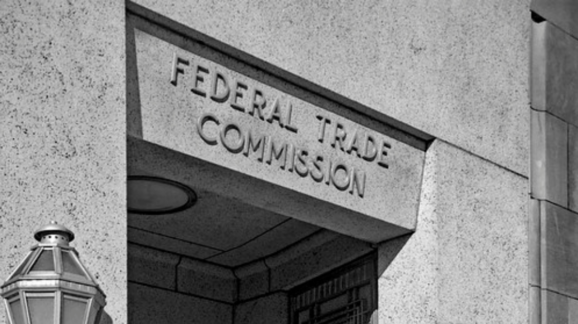The Supreme Court’s Axon decision shatters the in-house advantage of administrative law courts

Photo Credit: https://www.flickr.com/photos/22711505
Last Friday, the U.S. Supreme Court issued a significant ruling that upended the adjudicatory monopoly enjoyed by administrative law courts (ALCs). In Axon v. FTC (2023), the Court ruled that litigants can raise legal challenges to an agency’s structure directly in federal court. In other words, some private litigants suing federal agencies can now bypass a process often hampered by lengthy and expensive hearings – that is, some litigants can avoid those administrative courts entirely.
Justice Elena Kagan wrote for the majority, providing a legal avenue to liberate many individuals and businesses from the burdens of ALC adjudication. The Court’s Axon ruling encompassed dual challenges to agency adjudication in the related cases of Cochran v. SEC and Axon v. FTC. Both focused on the issue of whether private litigants suing a federal agency were required to adjudicate in an ALC before filing their case in federal district court.
In Axon, the FTC was sued by Axon Enterprises, a surveillance manufacturing company, after the agency sought to nullify its acquisition of a rival body camera company, Vievu. Axon attempted to file suit in federal district court. It alleged that the FTC’s attempt to void its acquisition deprived the company of property without due process under the Fifth Amendment. Axon also argued that the FTC’s insulated ALC structure violates Article II: more precisely, that structure prevents the President from exercising his removal authority of administrative law judges (ALJs).
The Cochran case raised similar constitutional issues with respect to the administrative structure of the SEC’s in-house courts. As a certified public accountant, Michelle Cochran was found to have violated the SEC’s auditing standards. She was fined $22,500 and barred from practicing before the SEC for five years. Cochran challenged this enforcement in an SEC court, only to lose before the ALJ. However the Supreme Court’s 2018 decision in Lucia v. SEC changed Cochran’s prospects, forcing the agency to remove all of its ALJs and re-appoint the judges in accordance with the Appointments Clause of the Constitution.
While this outcome resolved one of the constitutional issues at play with the SEC’s unaccountable adjudicatory system, the Commission ordered Cochran to go back to square one by filing new proceedings before a constitutionally appointed ALJ.
Refusing to become further victimized by a cumbersome, lop-sided adjudicatory process, Cochran filed her case in federal district court. She challenged the constitutionality of ALJs, pointing to how SEC’s “ALJs are too far insulated from the President’s supervision”. Cochran also took issue with how administrative judges were unjustly afforded a two-layer “for-cause” removal protections that violate the President’s executive authority. This layered protection was later deemed unconstitutional by a Fifth Circuit ruling in Jarkesy v. SEC (2022).
The Court’s Axon ruling also represents a notable victory for the preservation of Article III powers. It safeguards a district court’s federal-question jurisdiction over constitutional challenges to how agencies are structured. A party filing in federal district court can now avoid the extensive administrative process as outlined in the Securities and Exchange Act of 1934 and the Federal Trade Commission Act of 1914. In the past, parties were forced to undergo administrative review as required by the above Acts. Only after a final ruling was rendered by an ALJ or the agency’s Commissioners, could parties later appeal their case before a federal court for judicial review.
Now, a party must simply establish that the claims raised are “collateral” to the traditional enforcement actions of the agency, as evident in Cochran and Axon’s cases. The party can also bypass the administrative process by pointing to how their challenge against an agency falls beyond the bounds of its bureaucratic “competence and expertise”. For Axon, the sweeping constitutional claims raised by Axon Enterprises and Cochran were recognized as existing “outside the agency’s expertise”. These factors for circumventing ALC adjudication derive from the Court’s 1994 ruling in Thunder Basin Coal Co. v. Reich.
For too long, litigants have fallen victim to the unfair legal advantage wielded by agencies. Such cases are often defined by a web of frustrating scheduling delays, extended hearings, and costly legal expenses. As evident in Axon and Cochran’s unsuccessful adjudicatory disputes, the government wins almost every time when an administrative law judge oversees their case.
Now, administrative law courts no longer possess a home-court advantage over processing legal challenges to their existence. Axon solidifies the Court’s earlier ruling in Free Enterprise Fund v. PCAOB (2010) . Agency courts can no longer take precedence over federal district courts, granting litigants the right to choose where to file their cases.
For obvious reasons, ALJs overseeing Axon and Cochran’s cases were unwilling to acknowledge the unconstitutionality of their quasi-judicial authority. The Supreme Court’s ruling now prevents ALCs from exercising monopolistic control over challenges to its bureaucratic structure. Private parties can now file suit against agencies in federal court by raising constitutional concerns that fall beyond an agency’s expertise.
The unanimous outcome of Axon represents a major victory for liberty in the law. Private parties that challenge an agency’s existence, process, or structure are now free to their case before a neutral federal court. Outside courts tend to be unencumbered by the detrimental, bureaucratic restraints associated with ALCs. This will enable those with limited resources to reserve their time and money by litigating before a court where they actually possess a chance of winning.
Perhaps the greatest victory produced from Axon v. FTC is that federal bureaucracies can no longer insulate themselves from outside accountability to their unconstitutional structure.